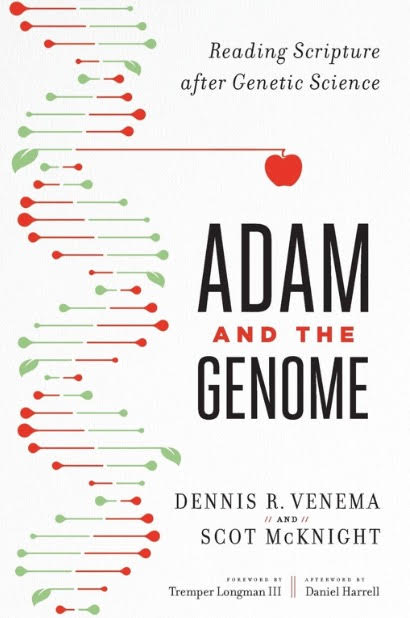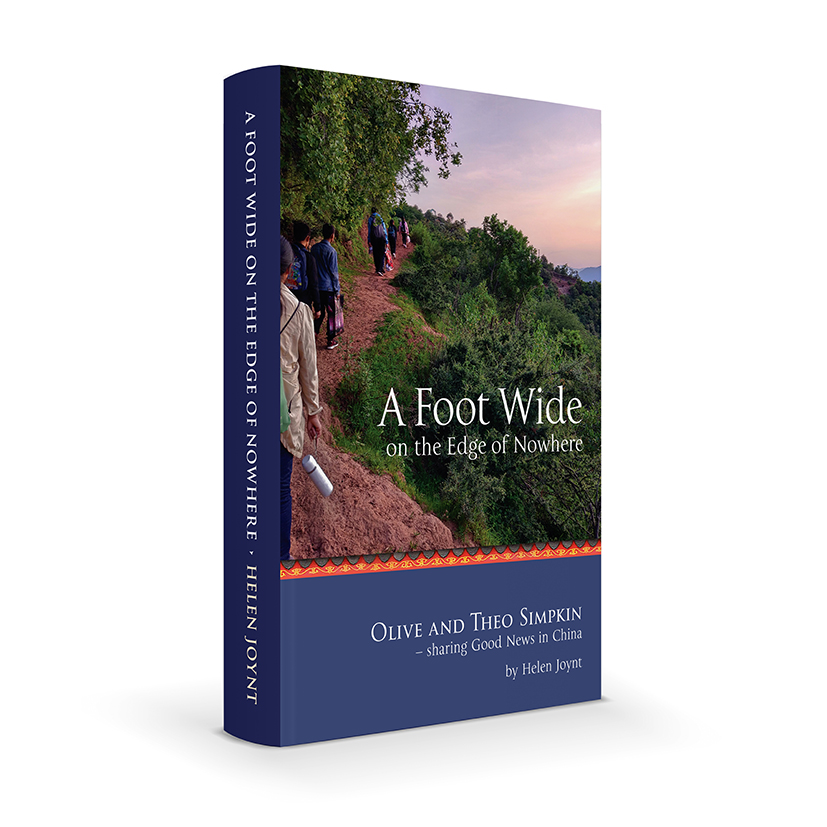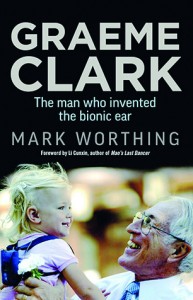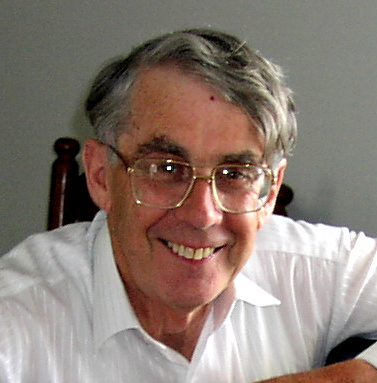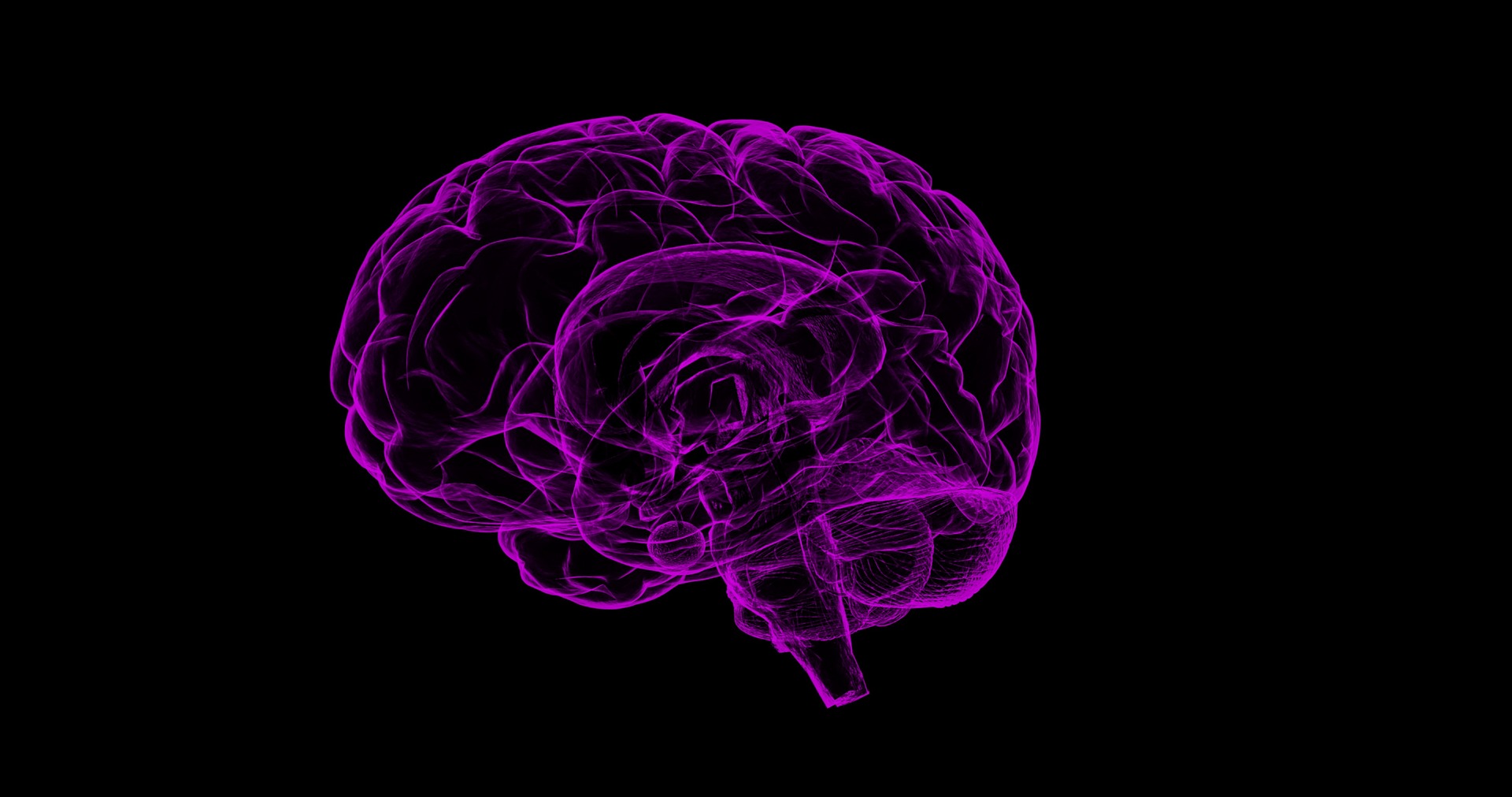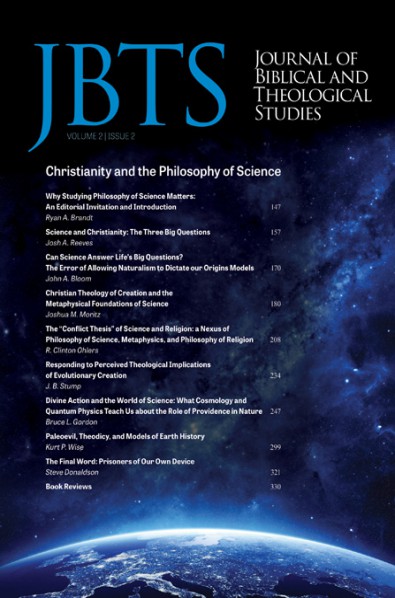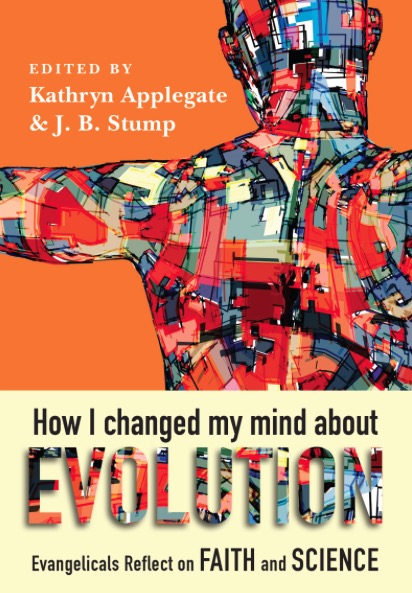


Contextual Approaches in the Dialogue between Theology and Science and their Implications for Understanding the Development of Doctrine
Edwin El-Mahassni
Edwin El-Mahassni is a PhD student with Flinders University researching the application of models from the philosophy of science to the development of doctrine. He also holds a MSc (Hons) and PhD in pure mathematics.
Abstract
The dialogue concerning Christian theology as a science is not new. However, it is only relatively recently that the importance of the context within which theology is conducted has been discussed. Previous philosophical rendezvous between science and theology are recalled, noting the characteristics they share; in particular those that consider context and approaches that go beyond foundationalism. Recent arguments for theology being viewed as a science are recalled and described. Though early attempts focused on approaches employing foundationalism, more nuanced techniques which discuss contextual factors have lately been expounded. Various works from the philosophy of science are used to demonstrate the benefit of context for thinking of theology as a science. Emphasis on the way this shift to a more holistic approach to ‘scientific theology’ impacts our understanding of the development of Christian doctrine is also provided.
Keywords
Scientific theology, foundationalism, contextual approaches, philosophy of science, development of Christian doctrine
Science is commonly thought of as the description, prediction and understanding of natural phenomena. The dialogue concerning Christian theology as science is not new. Mark Worthing (1994, pp. 402-3) remarks that since Augustine, theology has often been viewed as wisdom because it dealt with things eternal, while other disciplines can be considered as science because they dealt with the temporal. The key discipline that analyses the way science progresses and develops is the philosophy of science. The philosophy of science is concerned with the assumptions, foundations, methods, implications, and with the use and merit of science. When it seeks to determine if scientific results comprise truth, it also delves into metaphysics, ontology and epistemology.
It is only relatively recently that the importance of the context (or non-theological factors by which theology is conducted) has been discussed. Previous philosophical rendezvous between science and theology noted the characteristics they might share; but primarily from perspectives based on foundationalism. In this paper, foundationalism is understood as philosophical theories resting on justified belief and, as such, not geared towards considering the importance of context. A couple of further points also need to be made. Firstly, when discussions about the relationship between science and theology are held, the historicity of science and its progress are also considered. These are aspects which properly belong to the philosophy of science. Through the examination of methodologies, traditions, experiences and ways of interpreting data contextually, models can be identified and applied to theology. Secondly, if correspondences are made with theology, these will filter down to specific doctrines.
The role of the context in which theology and science are conducted and the subjective nature of explanations also belong to the discussion in determining correspondences between science and theology. Is theology objective or relativistic or somewhere in-between? If similarities and correspondences can be shown between science and theology, then the task of applying models from the philosophy of science in order to understand theology becomes obvious. Two types of approaches by which theology is conducted as a science will be described: Foundational approaches define science as a completely rational and objective enterprise, while contextual approaches are relatively recent and view science as being only partially objective, with factors such as culture, politics, etc. also playing a part in science’s progress. This leads to the main aim of this paper which is to outline some contextual approaches which can lead to a richer understanding of the foundations of theology as a ‘science’ and with interesting applications to development of doctrine.
Defining Theology as a Science through Foundationalism
Thomas F. Torrance provided a rational basis for the knowledge of God and discussed whether this knowledge can be thought of as a science (Torrance 1996). In considering whether theology is a science, he noted that theology explicitly assumes that the object of study, namely God, interacts with and seeks to be in a relationship with the enquirer. Torrance does not assume an impersonal, deistic view of God and believes natural theology must not be the foundation upon which divine revelation rests. He asserts that theology must come up with its own philosophy before engaging with other disciplines. But if theology is to be considered a science then theology “must step in to help men refer their thoughts properly beyond themselves and back to God” (Torrance 1996, p. x). Torrance presupposes that communication between humanity and God is rational and intelligible.
Torrance describes some particular features that make theological activity unique. These include: the lordship of God, the personal nature of Jesus Christ and the medium by which theological enquiry takes place (i.e. within a physical Earth with flesh and bone human beings). Torrance also discusses the role of theology among the sciences. Although he acknowledges other disciplines enquire, discover or learn about “knowledge of contingent realities”, theology invariably comes into conflict when a particular scientific discipline asserts authority over others, leading to subjugation or irrelevance. Correspondence between theology and other sciences does not lie in transference of language or methodology but in the “relations subsisting between the knower and the object in one field of knowledge and that between the knower and object in another field of knowledge” (Torrance 1996, p. 283). Thus theology and science share in the transcendental nature of the relationship between the researcher (or theologian) and the object of that research. For instance, the relationship between humanity and its environment: how it is to be looked after, conservation, etc. should be the same in both science and theology.
In order for theology to be considered a science, it is not unreasonable to believe that it must meet certain benchmarks. Wolfhart Pannenberg pointed to Heinrich Scholz’s 1931 proposal for minimum requirements of a science which theology meets. These are:
- The requirement of formal consistency. For theology, this means that theological statements have a cognitive character and make assertions about truth.
- The requirement of coherence. Here, theology’s object is to be unitary and demands that theological statements relate to a single area of investigation.
- The requirement of verifiability. Theological statements cannot be verifiable directly against the object in question (cited in Worthing 1996, pp. 26-30).
On this basis Pannenberg takes up the discussion as to whether theology is a science. He affirms that scientific status should be attributed to theology because theology is able to be tested as a series of hypotheses. Theological statements are analogous to scientific statements which exist within a framework of theoretical networks and with experience being given lesser weighting than propositions. Pannenberg makes an explicit link between his approach to Torrance’s scientific theology and Popper’s ideas, i.e. “all experience of meaning is hypothetical in the sense of the Popperian principle of ‘trial and error’ to the extent that it is based on an anticipation of the totality of reality which is still incomplete in the process of reality” (Pannenberg 1976, p. 333). On this basis Pannenberg is able to list several criteria for determining when theological statements have not been substantiated:
- They are intended as hypotheses about the implications of the Israelite-Christian faith but cannot be shown to express implications of biblical tradition (even when changes in experience are allowed for);
- They have no connection with reality as a whole which is cashable in terms of present experience and can be shown to be so by its relation to the current state of philosophical enquiry (in this case theological statements are transferred to the critical categories of mythical, legendary and ideological);
- They are capable of being integrated with the appropriate area of experience or no attempt is made to integrate them (e.g. in the doctrine of the church as it relates to the church’s role in society);
- Their explanatory force is inadequate to the stage reached in theological discussion, i.e. when it does not equal the interpretative force of existing hypotheses and does not overcome limitations of these which emerge in discussion (Pannenberg 1976, pp. 344-45).
Theological statements have to be part of a larger whole, meaning they cannot exist in isolation from the rest of theology. Echoing Torrance, Pannenberg argues that they must give a “coherent interpretation of the data of the religious tradition and the systems of meaning of present experience” (Pannenberg 1976, p. 344).
Torrance contends that God can be known in an objective manner by anybody through reason. He defines the process of gaining knowledge of God as similar to how knowledge is obtained in science: it is intelligible and accessible; it exists outside personal enquiry; and it is conceptual. Torrance states: “In the mind there are different modes of conception in accordance with differences in the nature of what is conceived” (Torrance 1996 pp. 14). Hence, knowledge of an object is dependent on the object itself and its corresponding nature. How an abstract mathematical idea is conceived, for example, is different to conceiving the design of building a new house. Though governed and guided by rational thinking and devoid of any speculation, how much one can know of God is determined by the object itself, namely God. An open mind to God communicating back to humanity is required, but enquiry is limited to how much God wants to reveal himself to the person asking. Torrance stresses that objectivity does not mean complete detachment or impartiality to the subject in question; rather feelings should not distort one’s thinking. Yet a person seeking to enquire is bound to only know as much as he is allowed to by the object (Torrance 1996, p.35). In ascertaining knowledge of God from an objective perspective, Torrance lists a number of factors to bear in mind. Firstly, God is supreme and directs and guides us to himself. Secondly, God gives himself to us in a unique sense through grace. Thirdly, God makes himself objective to us, without subjecting himself to anyone’s own thinking or control. Fourthly, God speaks to humans through his word. Fifthly, God is self-giving and in action towards humanity. Sixthly, God is engaged by redeeming his purposes. This allows for the possibility of having theological knowledge of God. How does God give himself in order to be known and how is he truly received? Torrance answers this in three ways: the first is Jesus Christ came down as a human being to meet with us and to reveal his existence to humans; the second is Jesus Christ has come to reconcile human creation to himself and the third is Jesus Christ came to also conform humanity so that truth may be received objectively. Torrance rejects the notion of natural science as being in opposition to theology, which if true, moves it further away from theology as they both progress and make advances.
Pannenberg was among the first twentieth-century theologians to seriously consider theology as science (Worthing 1996, p. 25). In proposing a quasi-ontological argument reminiscent of Anselm, Pannenberg rhetorically asks: “How can we conceive of a totality without conceiving of something outside it?” (Pannenberg 1976, p. 305). He compares this idea to Greek philosophy where “reality as a whole as a cosmos or universe, with God as the origin or arche of this cosmos” (Pannenberg 1976, p. 305). The crux of Pannenberg’s argument is based on God lying outside all of reality; but given humanity is not, then there is a gulf or a limitation in the concept of what reality means for humanity. Employing Greek philosophy, there is an “underevaluation” of humanity’s relation to the universal forms. There is a “lacking” within any person which is due to humanity’s finiteness. This places humanity in a constant state of expectation and anticipation so that there is an insurmountable gap in the knowledge that humans possess in comparison to God. Although experience is always a repository of humanity’s knowledge of reality, this can never be fully exhausted. Using the Popperian model of falsification and with God as the all-determining source of reality, Pannenberg’s aim was to show God is implicitly evidenced through revelation in history. If there is indeed a God, then there should be proofs of his existence by evidences which are present in the created order, i.e. “the word ‘God’ is to be understood as referring to an all-determining reality, substantiation of talk about God requires that everything which exists should be shown to be a trace of the divine reality” (Pannenberg 1976, p. 303).
Pannenberg does not deny that experience plays a role in gaining a better knowledge of reality. However, this element of subjectivity is formulated hypothetically; to be refuted or verified. The link with historical self-revelation can now be made: reality is linked with meaning accessible to anticipation which then links to the historic characteristic of the self-revelation of the divine reality (Pannenberg 1976, p. 311). Though Pannenberg defines religion as the place where experiences of God’s self-revelation are articulated in the totality of the world’s reality, he admits the value of individual experience. However, this is related to a socially organised religion. Their collective total and individual attitudes are elements in the history of religion. However, a problem arises if all experiences are treated the same way. Qualitatively, this means there is no difference from one experience to the next; no qualification demarcates one experience above or below another. And yet, throughout the history of Christianity, there have been some experiences that have helped shaped a truth about God. The personal inner struggles of people such as Athanasius, Augustine and Martin Luther have left their inedible mark on Christian doctrine. In theology as described by Pannenberg, all experiences are either always related to socially organised religions or “they acquire the status of intersubjectively valid truth in which the distinctness of the divine reality from individuals are expressed” (Pannenberg 1976, p. 313). Pannenberg’s reluctance to distinguish between different types of experiences would seem to fall short of recognising the nature and origin of the theological contributions mentioned above. Some experiences, more than others, have clearly played a crucial part in Christian history. The reason they have been so pivotal is because such personal experiences, regardless of their basis or justification, have managed to obtain a significant number of converts, thereby confirming the success in establishing a new paradigm (Kuhn 2012, p. 57). The falsification method employed by Pannenberg has major consequences for theology. If crucial statements like those affirming the divinity of Christ are shown to be false, then this automatically takes religion outside merely “faith” and into the domain of reason and probity (Worthing 1996, p. 40). Pannenberg argues that “if the reality of God cannot be distinguished from the assertions of believers and theologians regarding it, such assertions can no longer be taken seriously as assertions, but rather look like fictions created by believers and theologians” (Pannenberg 1976, p. 29).
However, part of a scientific theology must involve a serious consideration of the experiences encountered by the believer and a way of differentiating among these. As Torrance noted, to eliminate humanity from the study of God in order to eliminate subjectivity is not objectivity. The role of a scientific theology is to examine the communications expressed in religion about divine reality and how they connect to the experiences of religious people (Pannenberg 1976, p. 325). This is in stark contrast to Karl Barth’s view. As Worthing notes, Barth was convinced that subjecting theological statements to verification would betray their main axiom, revelation (Worthing 1996, p. 18). This fideistic view of theology is not shared by Pannenberg: “it is possible to verify theological statements, even in their relation to their claim of truth” (Pannenberg 1976, p. 343).
Pannenberg, in giving a Popperian method for thinking of theology as a science, believes if God is really God, then theology must step outside of itself and seek to integrate other cultures and traditions. God’s work must be seen everywhere. In allowing for the subjective nature of hypotheses to be verified or refuted, God must be able to be seen outside the personal convictions of believers and theologians. However, Pannenberg acknowledges a human being is not a tabula rasa and studies are always approached with preconceived ideas or presuppositions, and thus particular affections should be seen as heuristic and not probative. But a question immediately springs to mind: Is it ever the case that one is able to clearly demarcate one’s presuppositions to the task at hand? Michael Polanyi, who also describes an apparent tension in accepting a strict Popperian model, notes that “the reflecting person is then caught in an insoluble conflict between a demand for an impersonality which would discredit all commitment and an urge to make up his mind which drives him to recommit himself” (Polanyi 1998, p. 304).
In calling for dialogue outside of itself and opening up to being intersubjectively criticised, the call to be dispassionate concerning the claims being made and to be “objective” in the assessment of what a person proposes is at odds with the declarative statement being made. That is, the theologian or professing believer is not being ambiguous; he or she is stating something of what they believe to be true. In the words of Polanyi, a commitment is being made. He asserts: “For it is self-contradictory to secede from the commitment situation as regards the beliefs held within it, but to remain committed to the same beliefs in acknowledging their factual content as true” (Polanyi 1998, p. 304).
In a nod to Thomistic natural theology, Pannenberg claims that the reality of theological propositions must be “distinguished from the assertions of believers and theologians about it” (Pannenberg 1976, p. 329). The possible falsification of certain Christian core tenets is risky, but in taking it outside the merely subjective, Pannenberg challenges the claims that Christianity is devoid of reason or of historical basis.
An interesting commentary on Pannenberg’s methodology is made by Wenzel Van Huyssteen. Though one typically associates Pannenberg as aligning with Popper’s model of falsificationism, Van Huyssteen argues that Pannenberg also uses Thomas Kuhn’s theories. Van Huyssteen writes:
Pannenberg argues that Popper’s concept of theory-laddenness of all observation, and his acknowledgment of the conventional nature of so-called objective statements, must ultimately lead to failure in Popper’s attempts to draw sharp distinctions between scientific and metaphysical statements. In Pannenberg’s view, scientific statements are thus in themselves ultimately founded on general worldviews of a profoundly philosophical and/or religious nature. (Van Huyssteen 1997, p. 59)
Pannenberg sought to give theology a rigorous scientific basis through the use of a critically realist approach. Like Popper and the implications of his views on scientific progress toward understanding natural laws, Pannenberg does not believe the veracity of theological claims can ever be fully confirmed (or falsified). His theology integrates religious traditions, the present experience of totality and previously accepted philosophical arguments (namely, Popper’s). In relegating experiences to a concern that should be resolved or explained within the community, he appears to undermine the possibility of some personal experiences carrying greater weight than others. He also, perhaps unwittingly, does not allow for the importance that social and cultural pressures might bring to bear on theology, and subsequently their effect in the formation of doctrine. Not only does this make it harder to explain or understand why certain orthodox doctrines have remained hidden from Christianity for so long, but also how they are to be applied in different contexts and situations. These drawbacks call for the consideration of contextual approaches which science and theology might share.
Philip Clayton proposes an approach which takes theology beyond both foundationalism and relativism (Clayton 1989, pp. 150-67). He suggests that for theology to move past merely social reconstructions and into the realm of rational discourse, four things must occur, namely:
the free and public exchange of ideas, use and acknowledgment of resources, reasoned and criticizable discussion of other’s ideas, and ideals of clarity, objectivity and criticizability … these general characteristics must characterize each of the explanatory disciplines, including theology. (Clayton 1989, p. 153)
Clayton writes that there are particular problems inherent in theology in describing it as a science. Unlike other scientific endeavours, theology must satisfy both the demands of an academic discipline and its duties to the church. There are methodological dilemmas it must also consider: there is the problem of the struggle between functional and semantic approaches to religious belief. Functional approaches describe the dogmas operating within communities but independent of the content of belief. The truth or falsity of a religion is secondary and the sociological aspects of a religion are primarily considered, which can lead to a sort of conventionalism. As William Dean notes, “religious conventions about the meaning of the whole can be grounded in a society’s spiritual culture, rather than in extra historical foundation” (Dean 1994, p. 135).
Similar to Pannenberg, Clayton believes that for theology to be considered a science, it must meet a number of requirements. Firstly, it must be open to intersubjective examination and criticism. Secondly, this scrutiny must be open to anybody and no restrictions are to be placed upon anyone wishing to investigate the claims of theology. This means no solution is outside the bounds of enquiry. Though believers may hold beliefs without supporting arguments, these cannot be considered of epistemic merit; all beliefs must be treated as hypotheses. The bases of the methodology for theology to be considered a science are (Clayton 1989, p. 161-62):
- Theological explanations must be intersubjectively criticizable (the term intersubjective here refers to the ability of a concept to be readily and accurately communicated between different individuals and for it to be reproduced under varying circumstances for the aim of verification).
- Results of research in other areas are reasonable. The theologian must take seriously the objections from natural and social scientists, historians, philosophers.
- If basic theological beliefs are questioned, a warrant for their validity must be provided.
- Theology’s claims are to be taken as hypothetical and open to revision.
Defining Theology as a Science through Contextual Approaches
On the other side of the discussion about the way theology should be described as a science, arguments centre on the use of models from disciplines which aim to understand or frame different aspects of science, such as its historicity, progress, limitations, etc. Since theology is the study of a God who created everything, then it is incredulous to think theology can remain isolated and derive all theological truths, including doctrines, apart from all other disciplines. Further, there is a bigger challenge for Christianity in what George Lindbeck calls “postliberal antifoundationalism.” Rather than asserting universal norms of reasonableness, it should seek to determine “whether these can be formulated in some neutral, framework-independent language” (Lindbeck 1984, p. 130). This is not only a relevant academic question, but also a pertinent question for evangelicalism since it argues for a need to express intelligibility and possible truths of the religious message to those who no longer understand or know traditional words (Lindbeck 1984, p. 132).
Harold Schilling also argues that science and religion share many common features (Schilling 1962, pp. 67-87). He asserts that both have a threefold and circular nature. He illustrates this concept diagrammatically with three interconnected and mutually causative circles to explain both science’s and religion’s mechanisms. The first circle is empirically descriptive; data is gathered through observation and experimentation. The second circle is the theoretical. Here, generalisations and explanatory models describe the analysis of data. Predictions can also be made so the theories’ relationship to the first data-gathering circle is a two-way process. The data is affected through the theoretical paradigms from which they are being observed. The third circle is labelled as transformative and describes the application of the laws and theories from the previous circle. It transforms and changes the natural and cultural environment through the direct implementation of these laws. The influence of the second circle to it is obvious, however, the third circle also influences the second theoretical circle because the scientist wishes and often struggles to generalise the changes in a particular setting so that more data-gathering is required. Yet this process might have an effect on the environment from which the data is gathered. Analogously, here, theology is the second circle. It theorises and conceptualises the faith experience of the community. The third circle attempts to take theology and apply it to the real and practical domains of life like ethics and morality in society. The role of theology is a dual one: it reacts, generalises and criticises the experiences of the faith community and also elaborates the implications of these experiences for life and work.
An important role of theology is to act as a go-between for experiences and insights. This is done by interpreting their significance and how these are to be generalised for succeeding generations, different cultures and different situations. The task of theology is to distil the truths of a belief system and show their relationship to the praxis. At all times, in all places, and for all people, theology aims to answer the question of what it means to love God and one’s neighbour with all of one’s heart, soul and mind in the context of Christian’s daily lives within the societies in which they live. In explaining the link between theology and the transformative, Schilling remarks that theology’s role is to analyse and detail the struggles and trials that plague humanity and how they are to be dealt with and managed in this lifetime. Such an approach allows for doctrines to be continually rephrased and reformulated to audiences according to their current situations and areas of concern.
Ian Barbour lists several more similarities between theology and science. Science, like theology, is “acknowledged to be a historical and culturally conditioned enterprise” (Barbour 1997, p. 137). Barbour discusses the different ways through which historical explanations are given, as well as claims that subjectivity and relativism are only present in historical enquiry and not scientific enquiry. The difference is at most one of degree. Barbour, in briefly recalling the work of Hans Küng remarks that “paradigms and theories influence scientific data. Paradigms and beliefs even more decisively shape the interpretation of religious experience and religious stories.” (Barbour 1997, p. 144). Barbour makes three succinct and direct links with Kuhn. These are:
- All data are paradigm-dependent, but there are data on which adherents of rival paradigms can agree; science occurs within a presupposed paradigm.
- Paradigms are resistant to falsification by data, but data cumulatively affects acceptability of a paradigm. This is related to the empirical and states that no one piece of data determines the rejection of a paradigm.
- There are no rules for paradigm choice, but there are shared criteria for judgment in evaluating paradigms. Rationality is not evident in deciding what paradigm to choose (Barbour 1997, p. 127).
Theology as a science must not only understand a religious community’s beliefs but must also be able to articulate the way these beliefs are understood outside of the community. A claim in theology is evident, but Clayton also makes the case for this in the natural sciences. He recalls the formalist approach and lists three characteristics. Firstly, the context of justification cannot be separated from discovery. Secondly, explanation proceeds from universal laws and predefined boundary conditions. Thirdly, it is possible to formulate self-contained statements which can be intersubjectively tested. However, Clayton points out the formalist approach is not a true representation of the way science operates because the key to its success is the separation of observation and theory. But Clayton argues that the plurality of meanings that Hempel found led him to admit the existence of epistemic relativity in explanation. Clayton writes that there are at least three types of explanations in theology. These are (Clayton 1989, p. 4-5):
- Private explanations. These are individualistic and subjective in scope.
- Community explanations. These are explanations set by the particular believing and practising religious community.
- Intersubjective explanations. These are explanations not restricted to an individual or community of people and they involve an attempt to prove one’s religious belief or give them a deductive warrant.
Van Huyssteen agrees that theology’s concern with explanations is at the core of its task when he writes: “Clayton is therefore right when he states that theology is not primarily a descriptive (first order) but an exploratory (second order) endeavour” (Van Huyssteen 1999, p. 262). In abandoning a strictly formalist approach to theology, Clayton looks elsewhere in the philosophy of science literature. A contextual shift paves the way for approaches which take into account the holistic nature of scientific enquiry, or at least do not rely solely on formalism. The work of Thomas Kuhn is best known for taking such a contextual approach to science; however Stephen Toulmin and N.R. Hanson are also mentioned by Clayton, who makes the claim that “in the most general sense science is a process of understanding which addresses the question” (Clayton 1989, p. 35). Theology also must take a contextual approach since its starting point is the community’s beliefs and these do not exist in isolation to theological enquiry. Proper analysis of these beliefs takes into account the social, ethical and emotive contexts in which they occur, without being an endorsement of conventionalism. A method which Clayton mentions as taking context into account is the Lakatosian approach, named after Imre Lakatos. Clayton believes Lakatos achieves the right balance between contextualism and formalism. For Clayton, there is a need for theology to “thematize the general issues raised by Christian truth claims without sacrificing the specificity of the Christian tradition” (Clayton 1989, p. 176). But on the other hand “Christian explanations can only make sense of the world if believers can believe they are actually true” (Ibid. p. 176).
Lakatos’ work has also been applied to theology by Nancey Murphy. As a prelude, however, she devotes a chapter to explaining what would constitute data for theology with a believer’s discernment as a means for gathering data (Murphy 1990, pp. 157-63). Events in ordinary life are deemed to be acts of God by a community of believers. Murphy outlines previous work by Jonathon Edwards, Ignatius of Loyola, the Anabaptists and the Quakers in describing different ways this discernment may take place, but caveats this by also listing several ways to avoid labelling psychological data (or perceptual practices) as Christian belief. Like Clayton, she notes there must be intersubjective agreement or further observation, the engagement of perceptual practices (predicting future events from objects’ behaviours), the fact that perceptual practices are universally found and also that all normal adults use the same conceptual scheme for objectifying sense experience (Murphy 1990, p. 160). Murphy goes to great lengths to discount what Christian experiences should not be, and suggests Christian practices are legitimised by agreement within a community that has learned to collectively discern the work of God. She also acknowledges the theory-laden nature of interpreted data within an individual practitioner of that community and, in fact suggests looking for pre-existing hypotheses or theories, which may already suggest the causes for said observations. But, even if theory-ladenness is not an objection, the charge of subjectivity might still be levelled though she balanced this by noting observations should be subjected to validity and reliability. Validity refers to determining what constitutes an act of God, while reliability refers to being able to expect the same results under similar circumstances. They should be open to scrutiny for others to judge; again underlying the importance of communal discernment yet leaving open the possibility for novelty. Murphy speaks of the need for community assent or discernment in this regard, as well as replicability. She also advocates the use of Scripture as data and having thus set the groundwork for what this means in the context of theology, proceeds to give an outline of it in Lakatosian terms (Murphy 1990, pp. 174-211).
The hard core should contain the theologian’s judgment about how to sum up the minimum of the relevant community’s faith. A hard core helps to scope any research undertaken by the theologian as well as its content. For Murphy, this is in the form of a minimum doctrine of God and would include the Trinitarian nature of God, his holiness and his revelation in Jesus.
The negative heuristic are the measures or controls put in place to protect the hard core from being falsified. This heuristic leads the theologian not to abandon the hard core and instead looks to add an auxiliary hypothesis to deflect potential falsification. One potential negative heuristic would be to assert Jesus was sexist because there were no women amongst the twelve apostles. This would imply Jesus was not who he claimed to be or that God went against his nature and viewed women as inferior. An auxiliary hypothesis is to recognise the role of culture and society during Jesus’ time and/or acknowledge the prominent role of women in the New Testament.
The positive heuristic is defined as plans for future research or development. For Murphy, these could be dogmas, which are merely the normative statements of a particular confession. Thus, any future research must be consistent with those confessions of faith, acting as the worldview through which all data is filtered and interpreted. Murphy notes the positive heuristic “would be a plan to treat all the traditional loci in a way consistent with the teachings of Scripture” (Murphy 1990, p. 190).
The auxiliary hypotheses serve to spell out the meaning of the hard core and to provide connections between the hard core and the data. They allow the data to be related to the theory, and for theology these would include certain doctrines. For instance, a doctrine of original sin matches the observation that every person is infected by sin.
The data may refer to particular parts of Scripture or historical claims it asserts to be true and the varied results of discernment mentioned beforehand. Murphy advocates a “quasi-deductive” approach where a hypothesis predicts a particular observation with a high degree of probability. Like Torrance and Schilling, she notes the parallels between theology and science lie in the methodology and the way theology and science are conducted per se, i.e., “it sets out to show plainly that (potentially at least) theology is methodologically indistinguishable from the sciences” (Murphy 1990, p. 198).
Murphy criticised Pannenberg’s theology on two grounds:
- Pannenberg believed that revelation was indirect evidence of God throughout the whole of history.
- Disputes about which worldview is most likely are too complex to be settled.
For the first objection, she provides a Lakatosian alternative to his theology (Murphy 1990 pp. 49-50). For the second, she reframes Pannenberg’s theology in Lakatosian terms: The hard core is God as the all-determining reality, the data are all facts and theories from all areas of knowledge, while the auxiliary hypotheses are the historical accounts of Jesus’ life and death together with clusters of doctrines such as ecclesiology, Spirit, Trinity, Christian anthropology, doctrine of creation, etc. (Murphy 1990, pp.176-77).
However, Murphy herself does not escape criticism. Van Huyssteen critiques her model on several grounds. Firstly, it lacks a well-developed theory of experience (Van Huyssteen 1997, p. 84). Secondly, with regards to her criteria, if a model is to meet strict scientific epistemic standards, then she is not justified in making Scripture a criterion in itself. Van Huyssteen suspects this lack of warrant is because “these criteria have their epistemic foundation in a deeper and prior commitment” (Van Huyssteen 1997, p. 83). Thirdly, Van Huyssteen doubts whether scientific notions of replicability would truly be possible if truth is left up to the consensus of a community of believers; and even if it were, this still does not solve the problem of “trying to formulate transcommunal criteria” (Van Huyssteen 1997, p. 85). Fundamentally, Van Huyssteen’s main critique of Murphy is that by her opposition to postmodernism, which vigorously rejects foundationalist approaches, she has essentially insulated her Lakatosian theology from intersubjective testability (Van Huyssteen 1997, p. 87). By taking such a radical stance, Van Huyssteen argues there is little room for postfoundationalism. He writes:
The inclusion of God in the hard core of a research programme is therefore not only inconsistent with the rejection of a qualified form of critical realism. It could also reveal a threat to an esoteric fideist commitment that might firmly bar the way of theology to the reality about which it proposes to make statements. (Van Huyssteen 1997, pp. 89)
But, this appears unduly harsh. Van Huyssteen, who stresses the need for rationality in bridging the gap between different communities, also lays down foundational principles; namely rationality (or the sharing of its resources) itself. That is, one may ask: Where is the justification for rationalism being a sound basis or criterion for conducting intersubjective dialogue? Murphy, like Pannenberg, might argue that if God is creator of all, would it not make more sense to make God the hard core rather than using one of his characteristics, that is, his rationality? In the end, Van Huyssteen appears to contradict himself and invites the charge of conventionalism when he says: “If science and theology are complex intellectual activities of specific communities of inquirers, there is no way to prescribe a certain type of rationality for that activity without looking at its actual practice” (Van Huyssteen 1997, p. 165).
As mentioned, Van Huyssteen’s criticism seems misplaced. In a Lakatosian model, the hard core is the beginning, the axioms or assumptions which mark research are the starting points, not part of a central hypothesis which either needs to be verified or falsified. Any criticisms in this regard should be directed to Lakatos rather than Murphy. Instead, by choosing a hard core, Murphy establishes the beginning from which the race must begin. Rather than restrict discussion with the sciences, such a declaration makes clear the prevailing worldview of the theologian and gives the scientist with whom engagement is sought a more transparent view of the theologian’s pre-commitments and beliefs.
It would be clear from Murphy’s Lakatosian programmes that what is envisioned is not the assessment or the development of particular doctrines. Rather, Murphy is taking a look at the already-mentioned aspect of coherence within a series of doctrines which form part of a systematic whole. She remarks: “A single doctrine could form the center of a theological research program, but the research-programs model seems to lend itself better to incarnation in a systematic theology involving many doctrines” (Murphy 1990, p. 176). But even if this were true, it still calls into question the suitability of Murphy’s system because it is difficult to see how the emergence of doctrines would fit into the greater picture. At times, new doctrines lead to strife and schisms. To merely dismiss these crises as anomalies severely undermines the significance of their effect within their particular context. Since Murphy herself does not use the term crisis to describe these pivotal moments throughout Christianity, it would then seem that in order to accommodate a Lakatosian research programme for the development of doctrine, then the notion of a crisis in this context has to be dismissed as the constructs of an overactive imagination on the part of historians.
Nevertheless, Murphy, Schilling and Clayton among others have shown that a more nuanced approach that takes into account contextual approaches, variances among members of a community and the importance of experiences, means that there has been a move away from the initial assertions of theology as a purely objective or formalist science. Methodologies which take into account the historical, political, and social context of how doctrines develop allow for a more comprehensive understanding of how a doctrine arose and progressed. They may also reveal how a doctrine may be adopted or transferred to other cultures or societies without compromising or watering down the essence of the doctrine itself. Contextual approaches also mitigate unwarranted attacks or unduly harsh judgments on previous theologians or Christian thinkers whose names are linked or attributed to doctrines which perhaps are now reframed in different terms. The cautious approaches advocated above in avoiding foundationalism prevent not only sweeping generalisations but more importantly allow for a better understanding of how and why particular doctrines and heresies might have arisen. Alister McGrath underlines this when he proposes a model for the development of Christian doctrine (McGrath 2003, p. 217-36). For him, such a model should have four distinguishing features. These are:
- It is descriptive and not prescriptive. That is, historical study of Christian tradition will not be made to fit any preconceived notions.
- There is recognition of the episodic and continuous stages of the development of Christian doctrine.
- It will avoid foundationalist assumptions which have often been found when describing different aspects and stages in the development of doctrine.
- The acknowledgement that development pressures can point to different directions leading to different local outcomes or even regression.
Even in the natural sciences, there is inherently a community of practitioners which advances a given area of research. Within the research that is conducted there are assumptions, presuppositions and certain methodologies which most members of the community agree upon. McGrath remarks that a doctrine is accepted by a community which includes aspects of its tradition and is relevant to the present circumstances and situation of that community. He writes:
Doctrine is an activity, a process of transmission of the collective wisdom of a community, rather than a passive set of deliverances … [It] may be regarded as the present outcome of that long growth of tradition in which the Christian community has struggled to arrive at an interpretation of its foundational traditions, embodied in the New Testament, which both does justice to its own present place in tradition, and attempts to eliminate those doctrinal pre-judgements which are to be judged as inadequate. (McGrath 2003, pp. 28-29)
By defining doctrine within a framework that involves the acceptance of it by a community of faith, McGrath showed that doctrine “exercises a restraint over the individual’s perception of truth” (McGrath 2003, p. 28). This avoids flights of fancy and the creation of esoteric and extravagant doctrines. Another point of commonality between theology and science is the importance of tradition. This might not be immediately obvious for the natural sciences, but becomes evident when one realises that new theories or results are themselves built upon previously established results.
In conclusion, contextual approaches from the philosophy of science applied to theology allow for a more holistic understanding of God, his work and his relationship to humanity, not only in the present time, but also throughout history. Such sensitivity to history allows for a better appreciation of how specific teachings or doctrines arose, progressed and developed. It permits the possibility of better applying long-standing doctrines to different times, cultures and places, as well as avoiding misunderstandings and criticisms that come from not understanding the pressures and concerns of a community or society at a given time and place.
References
Barbour, IG 1997, Religion and Science, HarperCollins, San Francisco.
Clayton, P 1989, Explanation from Physics to Theology: An Essay in Rationality and Religion, Yale University Press, New Haven and London.
Dean, WD 1994, The Religious Critic in American Culture, State University of New York Press, Albany NY.
Kuhn, T 2012, The Structure of Scientific Revolutions, 4th ed., The University of Chicago Press, Chicago and London.
Lindbeck, GA 1984, The Nature of Doctrine, The Westminster Press, Philadelphia.
McGrath, AE 2003, Scientific Theology: Volume 3: Theory, T&T Clark, London.
Murphy, M 1990, Theology in the Age of Scientific Reasoning, Cornell University Press, New York.
Pannenberg, W, Theology and the Philosophy of Science, 1976, trans. by Frances McDonagh, The Westminster Press, Philadelphia.
Polanyi, M 1998, Personal Knowledge, Routledge, London.
Popper, K 2002, The Logic of Scientific Discovery, Routledge, London and New York.
Schilling, HK 1962, Science and Religion: An Interpretation of Two Communities, George Allan and Unwin, Ltd, London.
Torrance, TF 1996, Theological Science, T&T Clark Limited, Edinburgh.
Van Huyssteen, JW 1997, Postfoundationalist Theology, Wm. B. Eerdmans Publishing Co., Grand Rapids MI.
Van Huyssteen, JW 1999, The Shaping of Rationality, Wm. B. Eerdmans Publishing Co., Grand Rapids MI.
Worthing, MW, “Theology: Queen of the Sciences?” Concordia Journal (Oct 1994), pp. 402-414.
Worthing, MW 1996, Foundations and Functions of Theology as Universal Science: Theological Method and Apologetic Praxis in Wolfhart Pannenberg and Karl Rahner, European University Studies: Series 23, Theology, Peter Lang, Frankfurt.
